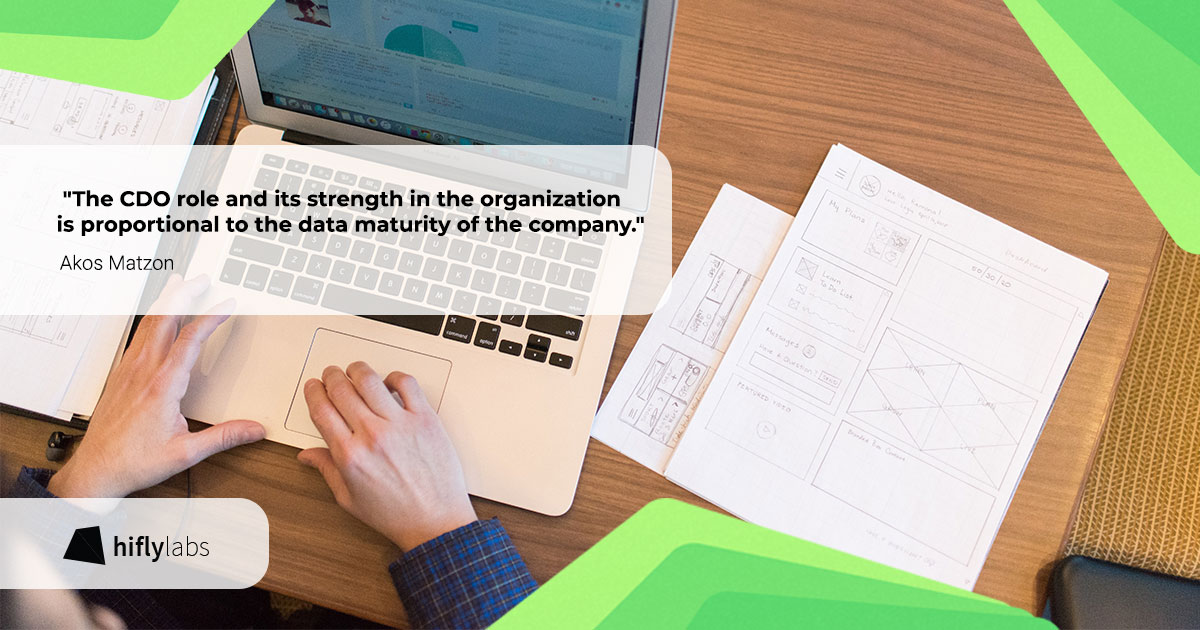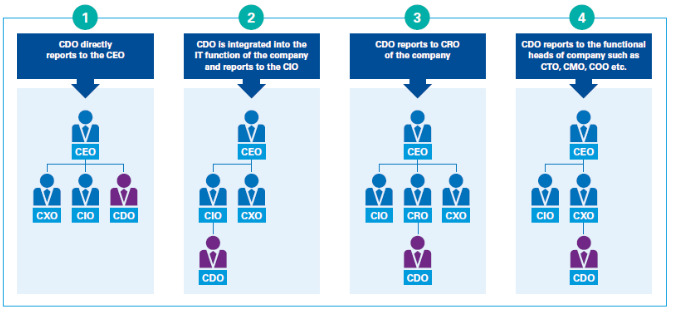Reading time: 4 min

Previously, we wrote in detail about what the frequently mentioned Chief Data Officer (CDO) is in charge of. Now, in the second part of the blogpost series, we discuss which companies in Hungary and abroad have CDOs, where they are typically in the organizational structure, and if there is no such role, who is in charge of these tasks.

CDO history
According to a Gartner survey, the first CDO was appointed in 2002 (Cathy Doss @ Capital One), then in 2005 Yahoo appointed its CDO (Usama Fayyad), and in 2010, 15 large companies had a “data boss”. The immense growth was brought about by the second half of the 2010s, when the number of CDOs in the world increased from four hundred (2014) to four thousand (2017), and in 2018 approx. 60% of the largest companies had an “Officer” responsible for the data at their “C-level”.
Where is Waldo then?
It is not evident where the CDO is in an organizational structure, despite the fact that the first of the three letters positions him/her to the “C-level”. According to a KPMG survey, the four most common models are shown in the following figure.

(Source: KPMG)
In its classical sense, the CDO was invented to work according to the first model, but the other models are also common:
- in some cases, he/she operates in the IT department and his/her primary goal is to establish a connection between IT and business areas – e.g. where none of the business areas is data-mature enough and data initiatives are pushed primarily from the IT side;
- elsewhere, the CDO operates in the area of risk management (Chief Risk Officer, CRO) – e.g. due to reporting obligations, especially in banking if the data focus is on compliance;
- or, the CDO can be part of any business area such as operation, sales or possibly marketing – e.g. where data traditionally could or should have been used to create value.
We can generally say that the CDO role and its strength in the organization is proportional to the data maturity of the company.
Does every second company have a CDO?
No, this is by no means the case, at least the situation in Hungary (our main market) does not justify it. One of the reasons for this is that the above figures refer primarily to groups of companies and large multinational companies, of which there are few in Hungary – at least their main decision-makers, the “C-level”, typically do not sit in the Budapest offices.
If we searched Linkedin at the end of 2019 / beginning of 2020 to find out whose position is “Chief Data Officer” or similar (e.g. Director of Chief Data Office or Chief Data Manager) in Hungary, we got the following companies:
- Cetelem
- Citibank
- K&H Bank
- MOL
- National Mobile Payment Plc.
- Takarékbank
- Unicredit
- … and the list ends here.
That’s the right question to ask why there aren’t more CDOs in Hungary, and the answer is mainly the following:
- as mentioned above, the management of many large companies is not in Hungary, and the role of the CDO is not typical of the SME sector,
- many companies are not yet there in terms of data maturity for having a dedicated role at this level to deal with data.
- and there are companies where the CDO is scattered in parts or entirely throughout the organization and appears in more than one position.
Who performs the tasks of a CDO if there is no CDO?
One can rightfully ask the above question, as most companies do not have this position, but the data maturity of some companies already requires such a data role, even if we do not call it a CDO. Although the definition of the CDO’s role is not clear, it can be stated generally that we mean at least the following tasks:
- development and dissemination of data culture,
- improving data quality,
- creating accessible and transparent data assets,
- support for data-driven business value creation.
One or two people may perform these tasks in parts, but in some cases, companies simply do not have a dedicated position e.g. to improve data quality or to develop and disseminate data culture. Based on our domestic experience, the following models are the most common:
- It happens that the position of Chief Digitalization Officer or Chief Information Officer includes the responsibilities of the CDO.
- Sometimes there is a “Head of Data,” a “Lead Data Scientist,” or a “Head of Business Intelligence” (or a role like these) where everything that a CDO would do gets done with some bargaining power. This is often done embedded under a business or IT area, and less by taking into account the interests of the entire company.
- There are examples for the tasks belonging to the CDO being carried out directly at the level of the CTO / CIO – however, this is primarily not about creating business value, but fulfilling obligations.
- At the lower level of data maturity, there are no managers with such tasks, often there are only one or two analysts in the company from whom no one expects the above responsibilities, they mainly produce ad-hoc analyzes and queries.
- The company isn’t “there” to bring the CDO position to life, or even the smaller team of analysts mentioned in the previous point. In such a case we’re just talking about a virtual data team who are actually business experts blessed with analytic veins, valuable IT team developers, and enthusiastic operators.
The above is related to data maturity, which is also an industry characteristic, therefore most CDOs and their “counterparts” can be found in the financial sector in Hungary as well. Of course there are industries “born with data”, e.g. online retail, where one will never find a CDO simply because it is included in their core business (e.g. marketing).
At many Hungarian companies, the CDO’s responsibilities can already be seen and data teams appear, but the CDO position itself is not yet widespread – at least based on the information posted on Linkedin*. In contrast, international trends suggest that within a few years, as the importance of data increases, so will the number of CDOs, so perhaps more and more companies will have CDOs in Hungary too.
*It is important to note that the rate of outsourcing is greatly different: there are places where almost all the people involved are external, and we also find companies where only the infrastructure/technology is provided by external experts. Our Linkedin search will most likely not include external experts.
Sources:
KPMG: The Chief Data Officer: A welcome new C-suite member in data-driven organisations
Author: Matzon Ákos – The leader of the Advisory team of Hiflylabs
